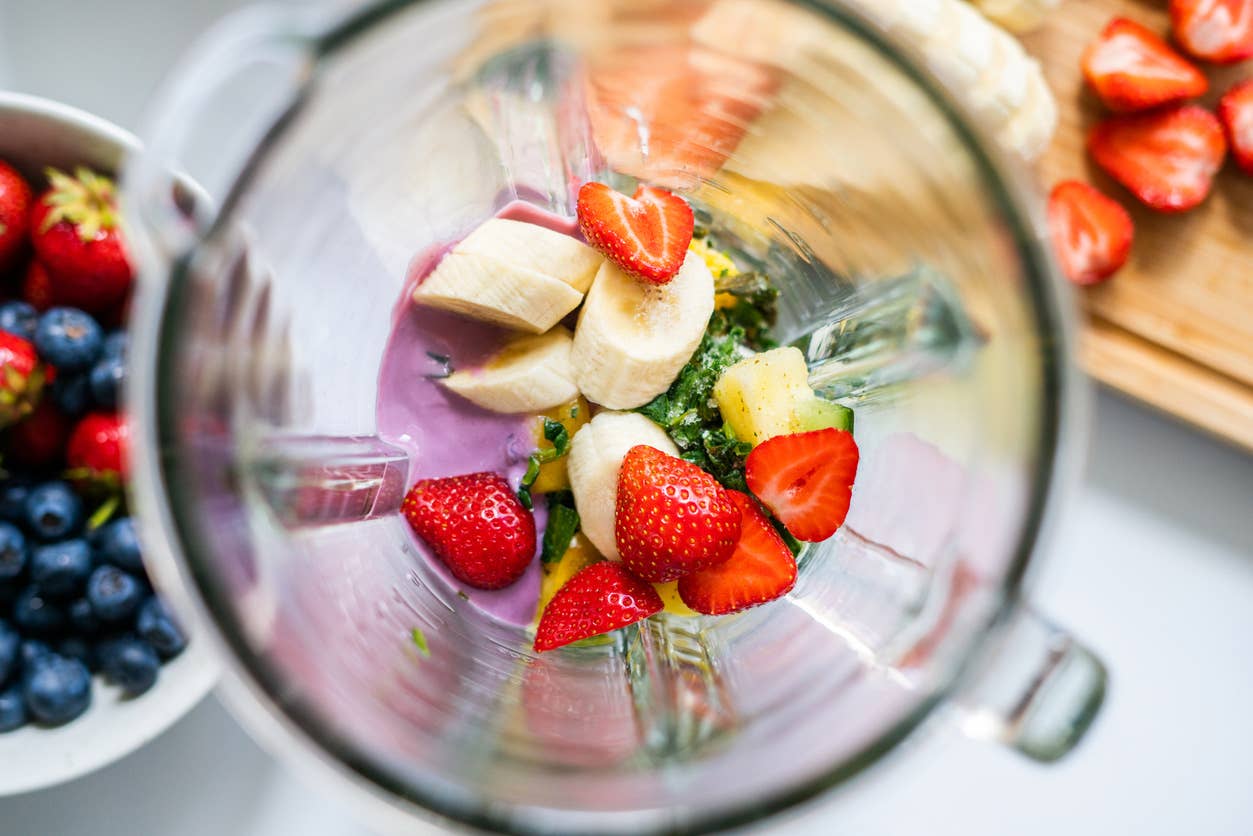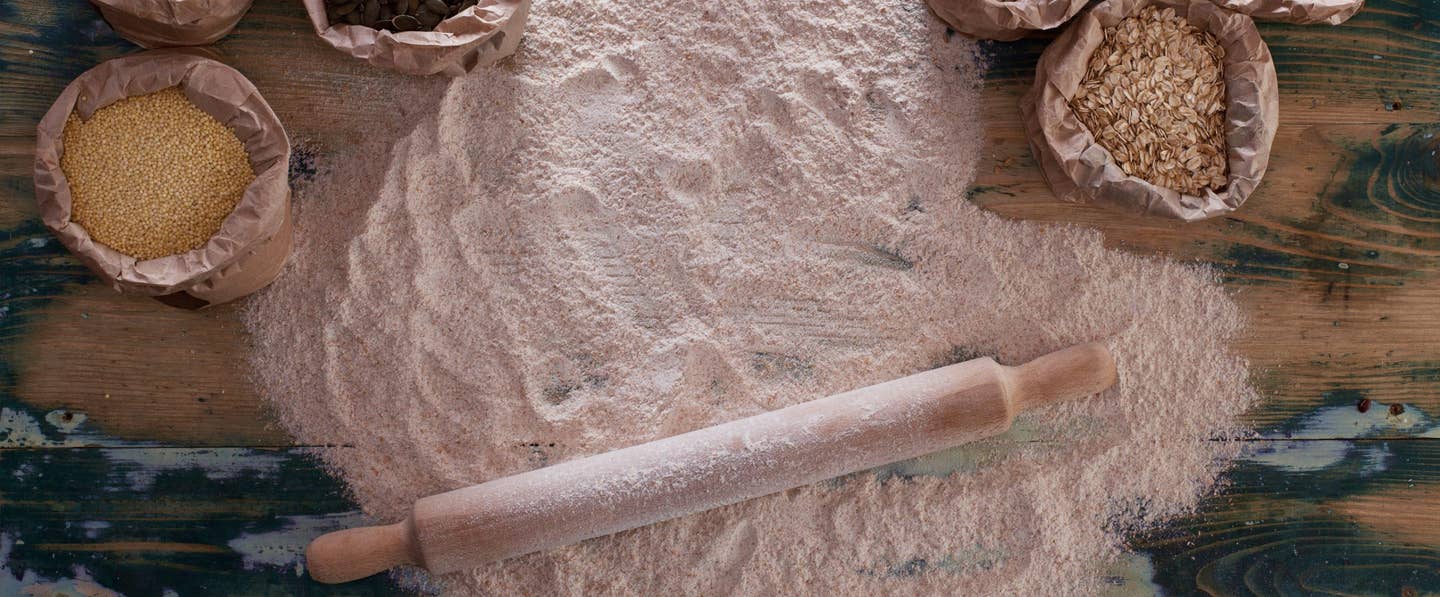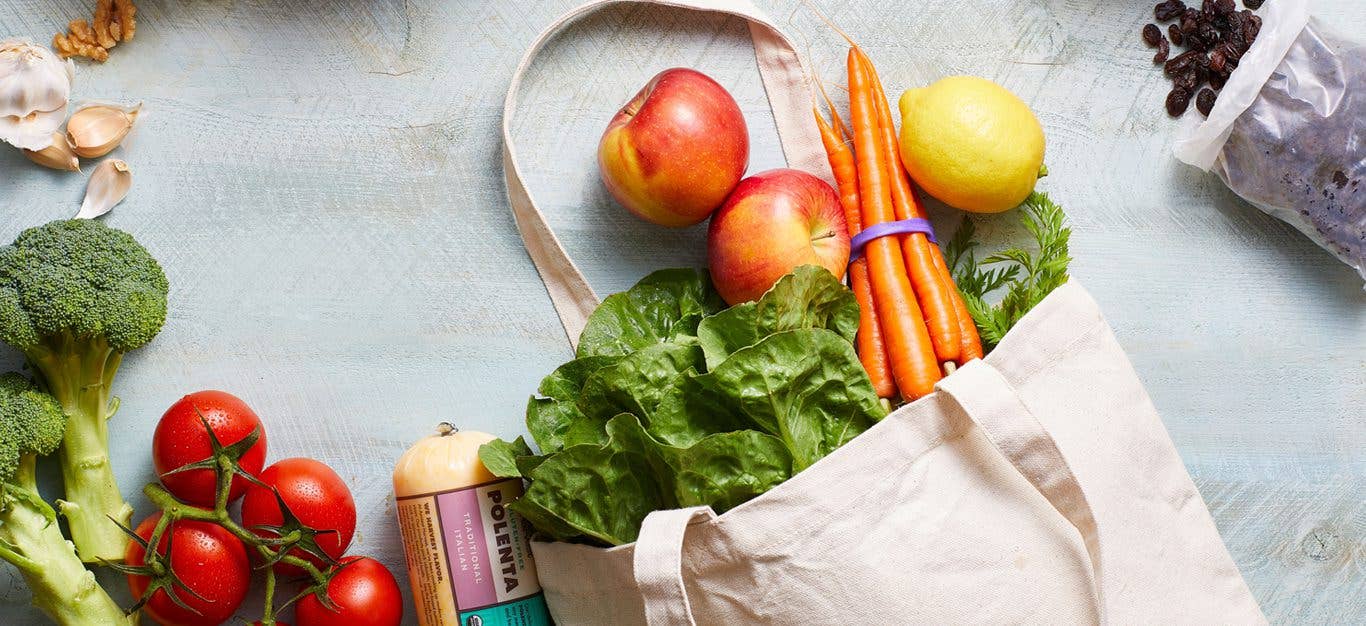Gluten-conscious bakers rejoice! The gluten-free flour options available to cooks keep getting better and better. To use them in your favorite recipes, all you need is a little understanding of how to make the most of all their flavors and textures. Read on for a breakdown of different types of gluten-free flours, tips for successful gluten-free baking, and a recipe for a foolproof, extremely versatile whole grain gluten-free flour blend that works in most baked goods. In this article, we’ll cover the following:
- Why Is It Important in Baked Goods?
- How to Shop for Healthy GF Flours
- Recipe for Whole Grain Gluten-Free Flour Blend
- 5 Success Secrets for GF Baking
- Different Types of GF Flours
What Is Gluten?
Simply put, gluten is a product of water and wheat flour. All members of the wheat family and barley contain two gluten-forming proteins, gliadin and glutenin. When the two proteins come into contact with water, they bind together to become gluten.
Why Is Gluten So Important in Baked Goods?
Gluten acts as the “glue” in a baking recipe, binding ingredients together so that they don’t crumble or fall apart after cooking. What’s more, gluten molecules form chains that are both elastic and extensible, two characteristics that give breads and baked goods their structure and texture.
Gluten’s binding properties make baking a cinch, which is one of the reasons why wheat flour still dominates the baked-goods market today. Fortunately, for people who have celiac disease or gluten sensitivity, there are other options, including flour blends that are calibrated to work just like all-purpose wheat flour.
How to Shop for Healthy Gluten-Free Flours
Gluten-free flours are made by grinding gluten-free grains, seeds, nuts, and other ingredients into a fine powder. We’ve listed them below, but you may already have a few favorites, like cornmeal for cornbread, buckwheat for pancakes, and almond flour for desserts. Today, you’ll find these options alongside the wheat flours in the supermarket. Unfortunately, these tasty flour options can’t always be used as a 1:1 substitute for wheat flour.
That’s where gluten-free flour blends come in. Gluten-free flour blends combine gluten-free flours with starches (such as cornstarch, potato starch, tapioca starch or flour, and arrowroot) that act as gluten-like binders so they will work in recipes that call for wheat flour. You’ll see the starches on the nutrition labels along with the various flours that make up the base of the blend. Some commercial blends also include xanthan gum and guar gum, two thickening agents that provide extra elasticity.
When selecting a pre-made gluten-free flour blend, check the label: Forks Over Knives recommends steering clear of blends in which white rice flour or sweet rice flour—which are devoid of fiber—are among the first ingredients. It’s also a good idea to go online and read the reviews from fellow bakers. These often provide helpful insights into how a flour blend tastes and works in recipes.
Master Recipe: Whole Grain Gluten-Free Flour Blend
A lot of thought and experimentation went into our master gluten-free flour blend recipe so that it would be as easy to make and as versatile as possible.
First, we use brown rice flour (which contains more fiber and nutrients than white GF flours) as a base. Then we call for a touch of oat flour to balance taste and texture. (You can use another gluten-free flour of your choice, if you prefer.) Two starches—potato starch and tapioca starch (aka tapioca flour)—complement one another and act as binders. But the real innovation comes from the addition of ground chia seeds, which provide extra binding power and elasticity, along with fiber and nutrients.
Once we got the quantities just right, we put this blend to the test, using it in place of whole wheat flour in Lunchbox Chocolate Chip Cookies, Sweet Potato Bread, Fluffy Whole-Wheat Pancakes, Classic Vegan Cornbread, and Mom’s Baking Powder Biscuits to make sure that it works. And it does, beautifully! The only recipes this blend isn’t designed for are yeast breads, which have very specific protein and binder content requirements.
Makes 3 cups
Ingredients
- 1½ cups brown rice flour
- ½ cup certificate gluten-free oat flour, or other gluten-free of your choice (see options below)
- ½ cup tapioca flour/starch
- ½ cup potato starch
- 2 Tbsp. ground chia seeds
Instructions
Whisk together all the ingredients until combined. Store in an airtight container and use as you would all-purpose or whole wheat flour.
5 Success Secrets for Gluten-Free Baking
Any time you substitute one ingredient for another, the results will never be exactly the same. That is especially true when replacing wheat flour with a gluten-free alternative. Here’s how to avoid the most common pitfalls.
Use a Combination of Flours
For the best taste and texture, use a combination of gluten-free flours (at least two). Not sure where to start? Use our master recipe for a versatile gluten-free flour blend, above.
Add Liquid Ingredients Slowly
Different gluten-free flours absorb different amounts of liquid—sometimes more, sometimes less—than wheat flour. Gradually add the liquid ingredients to the dry ingredients. You can also add more liquid (plant-based milk, water, etc.) as needed until you’ve reached the desired consistency.
Up the Baking Powder
Gluten-free flours are often denser than wheat flour and so require a little extra lift. Add ½ tsp. additional baking powder per cup of flour called for in a recipe.
Give It a Rest
Let the batter or dough stand 10 minutes before baking. The resting time allows gluten-free flours and starches to absorb more liquid.
Don’t Overbake
Gluten-free baked goods won’t be as golden brown as those made with wheat flour. Pale brown = perfectly done.
Gluten-Free Flours by Category
Gluten-free flours can be divided into four main categories: grains, pseudo-grains, nuts, and legumes. There are also a few specialty flours, like coconut and chestnut, which make their way into gluten-free recipes. Here’s a quick overview of what’s available, along with each flour’s flavor profile.
Whole Grain Flours
These are the workhorse flours in a gluten-free pantry: easy to use, inexpensive, and readily available.
Brown rice flour: Pale and mild with a fine grain. Use for gluten-free flour blends, pancakes, and sauces.
Corn flour/cornmeal/polenta: Bright yellow or creamy white with a grainy texture that ranges from fine to coarse. Use for cornbread, muffins, pizza crusts.
Oat flour: Pale tan, fine, light and faintly sweet. Use as a base for gluten-free flour blends or on its own in cookies and quick breads. Note: Oats can be subject to cross-contamination during processing, so if gluten is an issue, choose a brand that’s certified gluten-free. Learn more about making your own oat flour, check out our Cook’s Guide to Oats: How to Make Oat Milk, Oat Flour, and More.
Pseudo-Grain Flours
Even if you aren’t familiar with the term pseudo-grain, you will recognize many of the seeds that make up this category.
Amaranth flour: Flavorful and nutty. Use in baked goods with spices and robust flavors.
Buckwheat flour: Dark-flecked with a distinct robust flavor. Use in pancakes, crackers, and chocolate desserts.
Millet flour: Pale yellow, mild, fine-grained, and sweet. Use in savory breads, muffins, and waffles.
Quinoa flour: Nutty and grassy with a hint of bitterness. Use as part of a gluten-free blend with milder flours.
Sorghum flour: Light, fine-grained and neutral. Use in place of whole wheat flour or as a base for gluten-free flour blends.
Teff flour: Rich and dark with a fine grain and a hint of bitterness. Use as a flavorful addition to other flours and in savory breads and bold-flavored desserts.
Nut Flours
Nuts can be ground to a fine powder and used as gluten-free flour. Almond flour is the most widely used nut flour because of its mild, buttery flavor, but hazelnut and pecan flours are also widely available. It’s also very easy to make your own nut flour by grinding the nuts in a food processor until they become a fine powder.
Bean/Legume Flours
This category includes chickpea (garbanzo bean) flour, fava bean flour, and mung bean flour. Chickpea flour is the most common and the most versatile, with its golden color, buttery flavor, and high protein content.
Specialty Gluten-Free Flours
Three popular gluten-free flours don’t fit into any of the above categories: chestnut flour, cassava flour, and coconut flour. Chestnut flour is dense and flavorful and best used as an addition to other gluten-free flours in recipes. Cassava flour (made from dried cassava root) is mild and light. Coconut flour is made with dried coconut meat; we recommend using it in moderation because of its high fat content.
Looking for more gluten-free cooking inspiration? Check out Our Favorite Gluten-Free Vegan Recipes!
Related News
Save 40% This WeekOn Forks Meal Planner

Forks Meal Planner takes the hard work out of making nutritious meals the whole family will enjoy.
SAVE $200 ON OUR ULTIMATE COURSE

Join our best-selling course at a new lower price!




